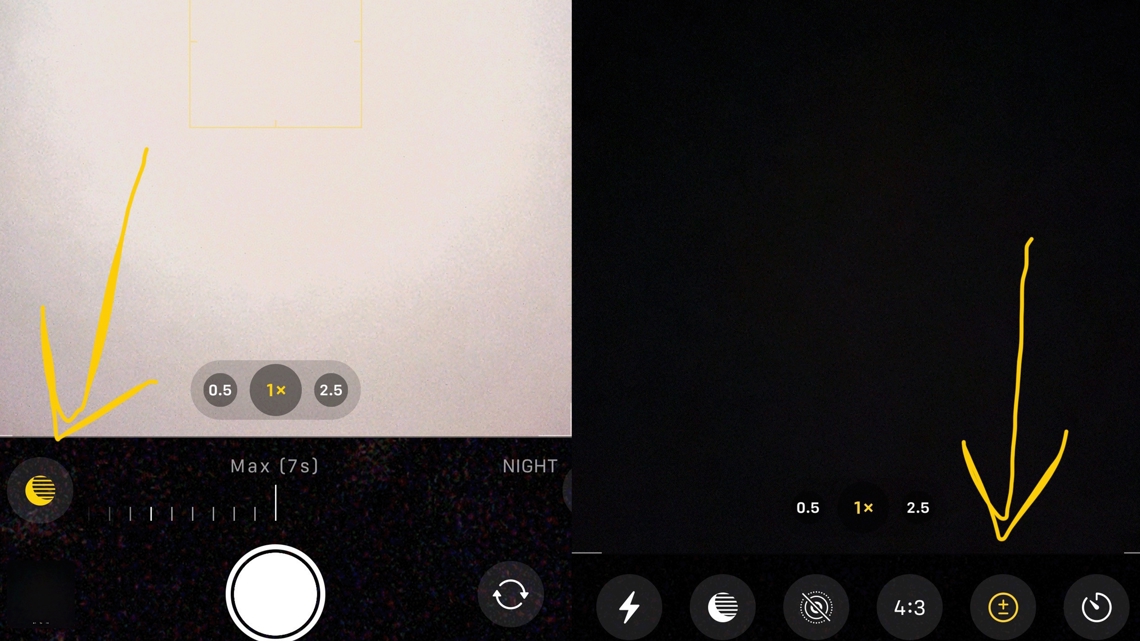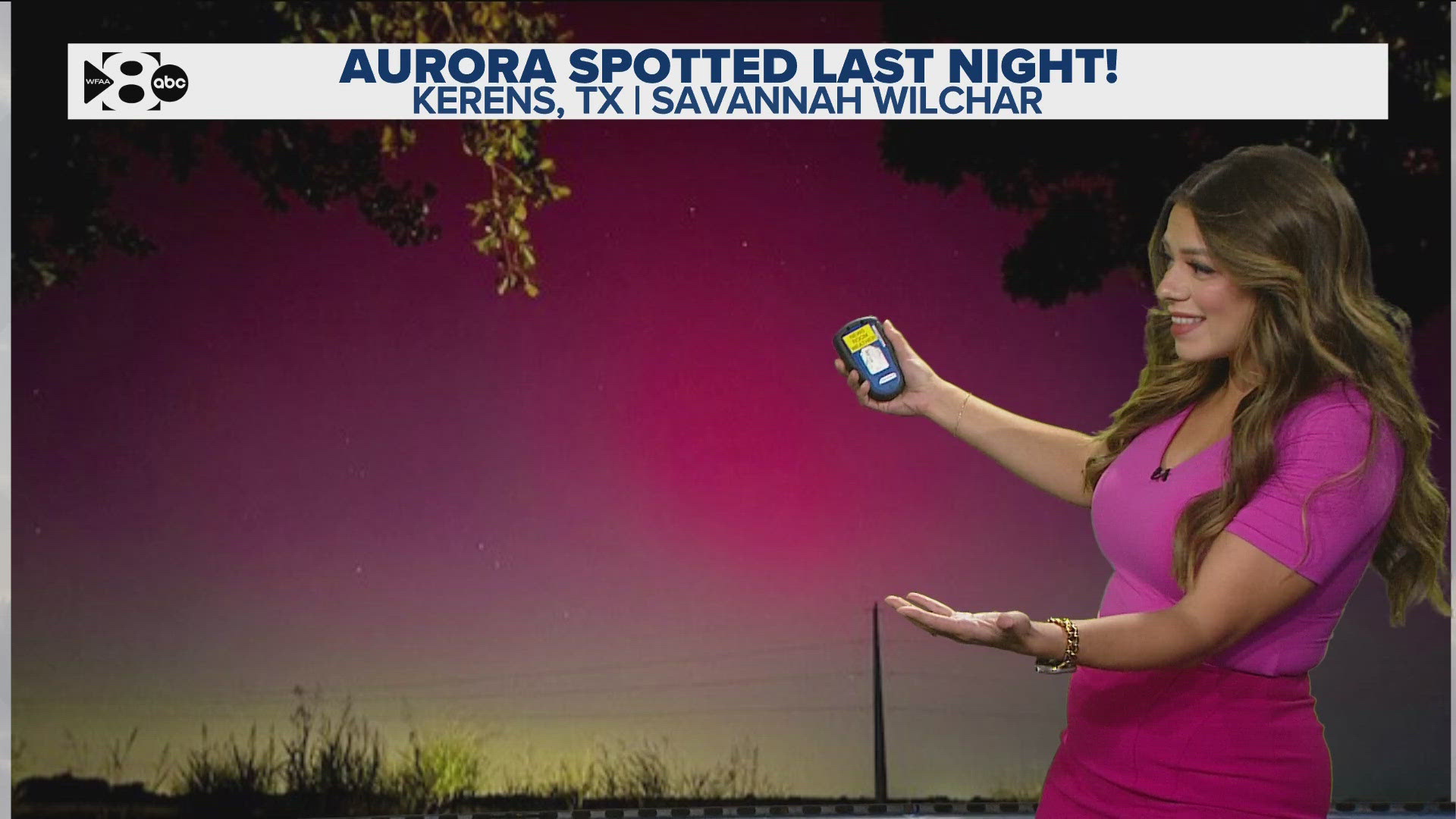DALLAS — North Texas got an incredible look at the northern lights on Thursday night, especially if you managed to be in an area away from the glow of city lights. We received numerous photos of vibrant pink-and-purple lights glowing in the night sky.
Typically, the northern lights, or aurora borealis, are visible in regions close to the Arctic Circle. However, during periods of heightened solar activity -- which was the case after a geomagnetic storm warning this week -- the auroras can extend farther south. And in rare cases, this includes parts of the southern United States into North Texas.
Still, that doesn't mean the northern lights were as vibrant to the naked eye as they appeared in photos. And while there's a chance we might see them again on Friday night, you might want to take this advice from WFAA meteorologist Jesse Hawila: Try viewing the sky through a longer exposure camera, or adjusting the setting on your smartphone.
Using a camera with long exposure will let more of the light into view, so it can actually be seen. Since we're farther south than most areas more accustomed to seeing the northern lights, the colors might not show up as vibrant or bright.
As Jesse told us, on the iPhone, that means finding the half-moon icon on the bottom left of your screen while taking a photo, and turning up the setting to the max exposure levels. This will allow more of the northern lights to be visible.
Jesse even provided us with these handy guides, advising to crank up both of the settings below:


So if you're looking for the northern lights Friday, double check those camera settings and good luck.
What causes northern lights?
We are in a particularly active solar pattern, which means frequent solar storms. The sun goes through active and less active periods in roughly 11-year cycles.
Solar storms send ions and electrons toward the Earth at a million miles per hour. Most of these electrons bounce off of the Earth's protective magnetic field. Sometimes electrons still manage to get through where the magnetic field is the weakest - the north and south poles.
Electrons then interact with oxygen and nitrogen in our atmosphere. This interaction gives off energy in the form of lights causing the beautiful phenomenon we witnessed in Texas earlier this year.
If the solar storms are strong enough, the electrons travel toward the lower latitudes, as we saw Thursday night.

